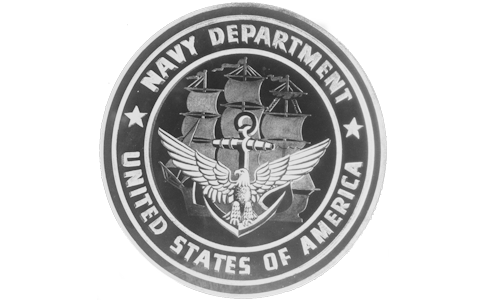Navy Department Communique No. 194
NOVEMBER 16, 1942
South Pacific (all dates are east longitude)
- The following resume of recent events in the Solomon Islands area is based upon preliminary reports from the battle area and is necessarily incomplete.
- Air reconnaissance during the early days of this month revealed a heavy concentration of Japanese transports, cargo ships, and combatant units of the enemy fleet in the New Britain-Northwestern Solomons region. An attempt by the enemy to recapture our positions in the Guadalcanal-Tulagi area of the southeastern Solomons was indicated and on November 10th it became evident that the expedition was being launched in force.
- Japanese naval forces approached the southeastern Solomons from the north as other detachments, including many transports, moved southeastward toward Guadalcanal from Rabaul and Buin, where expeditionary forces had been assembling.
- General MacArthur’s aircraft were of great assistance to our naval forces, both before and during the naval actions. Army bombers made repeated successful attacks on units of the Japanese invasion fleet at Rabaul and at Buin. (These attacks were announced by United Nations Headquarters in Australia.)
- The spearhead of the Japanese attack was a force composed of two battleships of the Kongo class and a number of other vessels believed to have been 2 heavy cruisers, 4 light cruisers, and about 10 destroyers. This unit reached the Guadalcanal area shortly after midnight on the morning of November 11th, intending to bombard our shore positions prior to a large-scale landing from a large group of transports which had been observed in the Buin-Shortland area. This Japanese bombardment force was formed in 3 groups. As they approached the bombardment area they were engaged by units of our fleet and the ensuing battle was fought at close range. It was during this engagement that Rear Admiral Daniel J. Callaghan, U. S. N., was killed in action. During this furious night engagement the Japanese seemed confused and during the latter part of the battle 2 of the 3 Japanese groups were firing at each other. Shortly thereafter the enemy fire ceased and the Japanese withdrew from the battle and retired to the northward.
- During the day of November 13th, U. S. aircraft made continuous attacks on damaged Japanese ships which remained in the area. During the late afternoon a large formation of at least 12 enemy transports, under heavy naval escort, headed toward Guadalcanal from the Bougainville area. As a preliminary to the proposed landing an enemy surface force bombarded our positions at Guadalcanal shortly after midnight on the morning of November 14th. Later in the morning, as the transport group drew near to Guadalcanal, it was struck heavily by our air forces and at least 8 of the transports were sunk. The remaining transports continued toward Guadalcanal.
- During the night of November 14-15, U. S. naval surface forces again engaged Japanese surface units in the Guadalcanal area. Details of this engagement have not yet been received.
- On the morning of November 15th, four enemy cargo transports were found beached at Tassafaronga, about 7 1/2 miles west of our positions on Guadalcanal. These transports were attacked by air, artillery and naval gun fire and were destroyed.
- On the morning of November 15th, our patrol aircraft reported the Japanese forces withdrawing to the northward, and no reports of any further action have been received.
- During the engagements described above the Japanese suffered the following losses and damage:
- (a) One battleship sunk.
- (b) Three heavy cruisers sunk.
- (c) Two light cruisers sunk.
- (d) Five destroyers sunk.
- (e) Eight transports sunk.
- (f) One battleship damaged.
- (g) Six destroyers damaged.
- (h) Four cargo transports destroyed.
- Two light cruisers and six destroyers are the only U. S. naval vessels reported sunk in the actions which were fought on November 13, 14, and 15. The next of kin of casualties will be notified by telegram immediately upon receipt of information.
